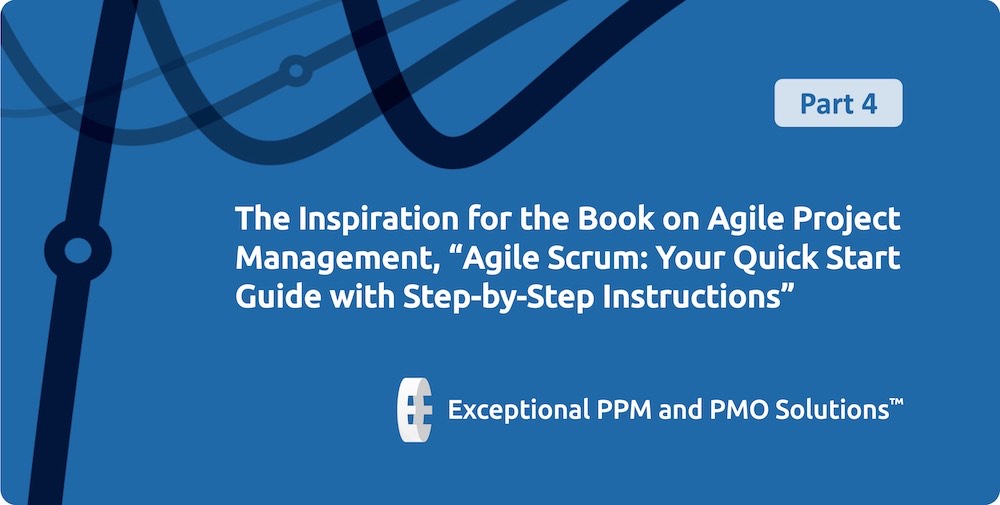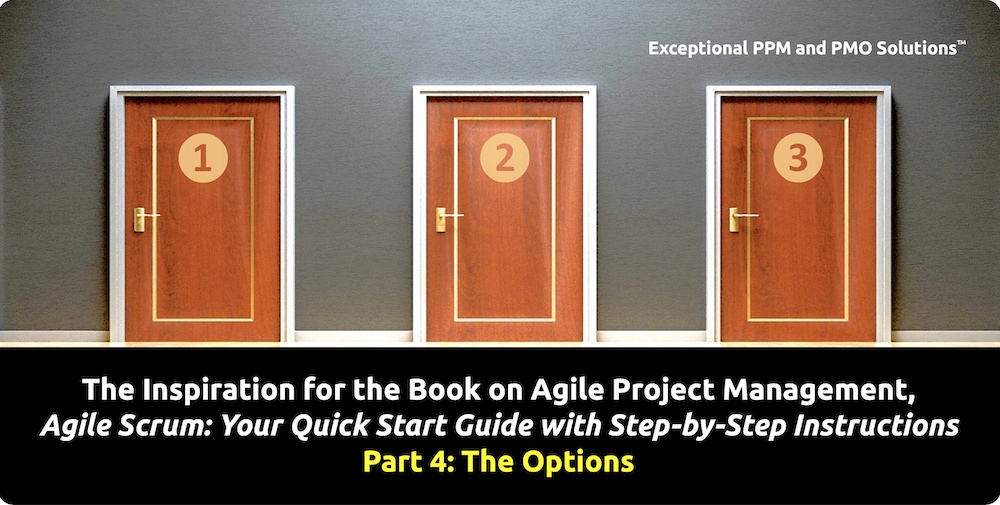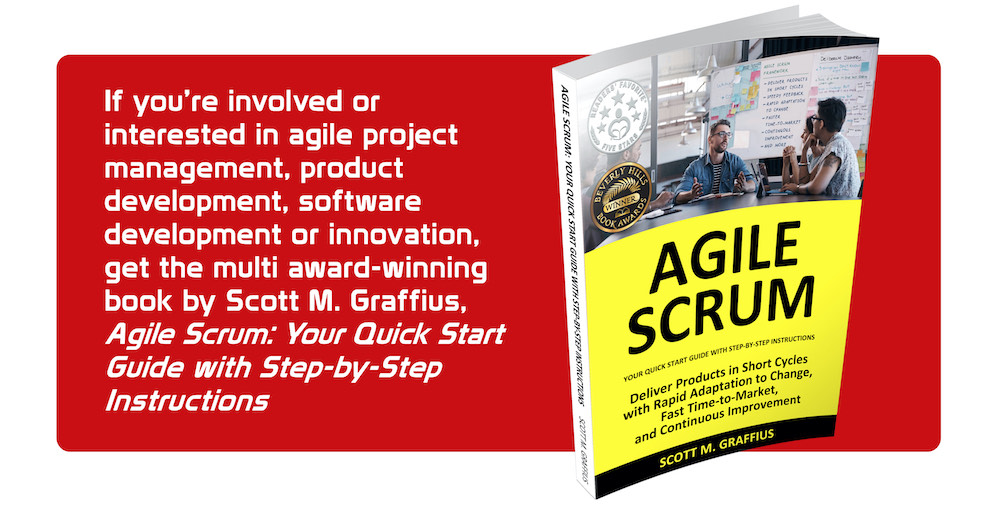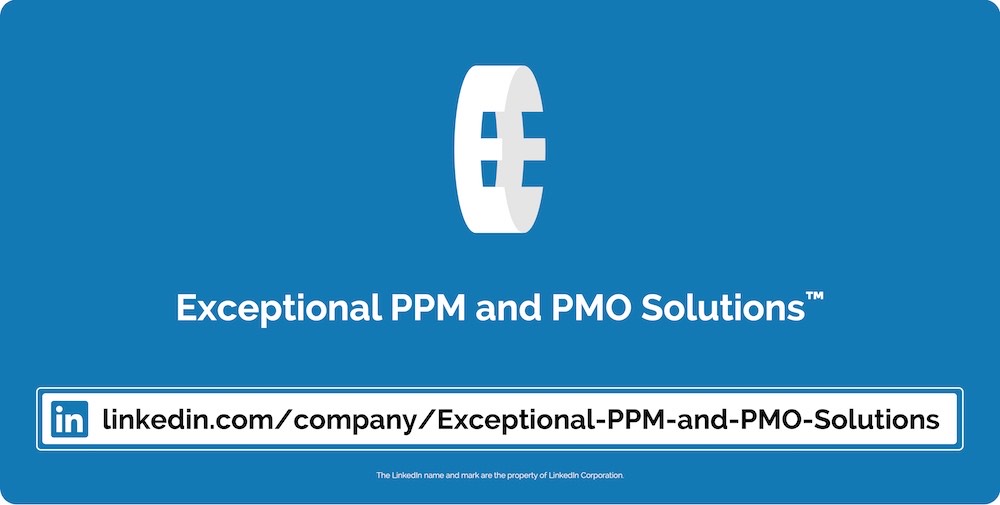The Inspiration for the Book on Agile Project Management, “Agile Scrum: Your Quick Start Guide with Step-by-Step Instructions” | Part 4
26 March 2019

The Inspiration for the Book on Agile Project Management, Agile Scrum: Your Quick Start Guide with Step-by-Step Instructions
Scott M. Graffius, CEO of Exceptional PPM and PMO Solutions™, helps companies achieve their strategic objectives and business initiatives through project management leadership. A fantastic agile transformation outcome with a client organization in the entertainment industry was the inspiration for Scott's award-winning book, Agile Scrum: Your Quick Start Guide with Step-by-Step Instructions. This is the story behind the book—told by Scott. Identifying details have been changed and certain elements are not included.
This article is the fourth installment of the eight-part story. If you haven't already read the earlier parts, you can find them here:

Agile Transformation at an Entertainment Company | Part 4: The Options

After gaining a broader and deeper understanding of the organization including their Scrum implementation, I met with the executive vice president (EVP) and we discussed next steps. I presented three options:
- No change,
- Revert to the earlier waterfall-only model, or
- "We can try different things" (aligned with the value of openness) with the objective of improving their agile implementation and achieving their goals.
I said, "we can try different things" because while I believed that changes would likely result in improvements, success could not be guaranteed. I also said, "we can try different things" because any meaningful change would require the cooperation and collaboration of many people. The EVP decided on the third option: trying different things.
The doing of "different things" started with training. I first met with the EVP. I then met with the Scrum Master in several one-on-one meetings. And since he was committed to education and improvement, he later on completed the Certified ScrumMaster (CSM) training and certification. The Product Owner was unable to attend the office in person for one-on-one training, but we communicated by phone and Skype. The EVP soon decided that the Product Owner needed to be co-located with the Scrum Team. He found a new Product Owner within the organization. I met with the new Product Owner in multiple one-on-one sessions. And—similar to what occurred with the Scrum Master—since the new Product Owner was committed to education and improvement, he subsequently completed the Certified Scrum Product Owner (CSPO) training and certification. I delivered training to the Development Team as a group. It included an overview and more in-depth coverage of certain topics such as pair programming and technical debt. Later on, some Development Team members completed the Certified Scrum Developer (CSD) training and certification. Stakeholder training follows next.
I delivered a one-hour overview of Scrum to the executive stakeholders in a group session. The attendees asked questions and made comments throughout the meeting. One stakeholder suggested that we do what the American Management Association says is best for Scrum. Then other attendees mentioned additional potential sources for information on agile. I explained that different organizations may have their own perspective on what works well for agile/Scrum, and that one way to go (I mentioned this in part to continue their engagement, involvement, and buy-in) is to look to the Scrum Alliance, a leading authority on the subject, but also see if others have ideas that are aligned with the authority and also fit the desired future state of the organization. I committed to doing the research and the stakeholders thanked me in advance.
I already had a library of 76 items on agile/Scrum—consisting of material from the Scrum Alliance, Project Management Institute, Deloitte Touche Tohmatsu, Gartner, KPMG, Harvard Business Review, IEEE, MIT, Forbes, and many others. I expanded it to include sources mentioned by stakeholders during the training session and I diligently reviewed all of the content. The diverse sources identified several values and practices as being central in successful Scrum implementations, and such factors were typically consistent with guidelines from the Scrum Alliance. I then met with each of the stakeholders individually and presented them with a summary of information from the Scrum Alliance and others.
I facilitated a follow-up group meeting with the executive stakeholders. Information from the one-hour training and the diverse sources was summarized. The stakeholders concluded that the central problem with the then-current implementation was that people were not following good practices. They then discussed, voted, and identified what they viewed as the high-level top 10 success factors for a Scrum implementation at the organization based on the previously presented information. In no particular order, the top 10 items were:
- Support from management;
- Each member of the Scrum Team (Scrum Master, Product Owner, and Development Team) is 100% allocated to the project;
- There is an agile coach, agile Project Management Office or agile Center of Excellence;
- Satisfaction is a crucial metric;
- The Scrum Team has no more than 11 people;
- The Scrum Team is co-located;
- There are consistent practices and processes;
- There is a digital wallboard or other information radiator;
- There are frequent and high-quality interactions; and
- There is continuous improvement/inspect and adapt.
Some of the items overlap/are not mutually exclusive, and the items are not exhaustive. I thanked the executive stakeholders for their support, and I told them that the 10 factors are built into the go-forward plan. The stakeholders expressed their appreciation.
The EVP and I conducted a mini-retrospective on the training sessions. The EVP was enthusiastic about what we've done so far, and he said that morale had improved. He authorized company-paid CSM, CSPO, and CSD trainings and certifications for staff (mentioned earlier). The EVP said we could advance to the next stage: piloting changes. I asked if he was open to terminating the use of the software tool introduced by the value-added reseller (VAR). He initially said that so much time and money had been invested in it that it would be hard to justify doing so. I said it differently: "We can try different things" could mean putting the software tool on vacation for a period. He agreed. We moved to the pilot—which involved doing many things differently. Examples follow.
The Inspiration for the Book on Agile Project Management, Agile Scrum: Your Quick Start Guide with Step-by-Step Instructions continues with Part 5: The Pilot — Vision, Roadmap and Release Plan, and Product Backlog.

About Agile Scrum: Your Quick Start Guide with Step-by-Step Instructions

A fantastic agile transformation experience and result with a client organization in the entertainment industry was the inspiration for Scott M. Graffius’s multi award-winning book, Agile Scrum: Your Quick Start Guide with Step-by-Step Instructions (ISBN-13: 978-1533370242).
Here's an excerpt from the book: "Shifting customer needs are common in today's marketplace. Businesses must be adaptive and responsive to change while delivering an exceptional customer experience to be competitive. Traditional development and delivery frameworks such as waterfall are often ineffective. In contrast, Scrum is a value-driven agile approach which incorporates adjustments based on regular and repeated customer and stakeholder feedback. And Scrum’s built-in rapid response to change leads to substantial benefits such as fast time-to-market, higher satisfaction, and continuous improvement—which supports innovation and drives competitive advantage."
With clear and easy to follow instructions, Agile Scrum: Your Quick Start Guide with Step-by-Step Instructions helps you:
- Implement and use the most popular agile framework―Scrum;
- Deliver products in short cycles with rapid adaptation to change, fast time-to-market, and continuous improvement; and
- Support innovation and drive competitive advantage.
Hailed by Literary Titan as “the book highlights the versatility of Scrum beautifully.”
Winner of 17 first place awards.
Agile Scrum: Your Quick Start Guide with Step-by-Step Instructions is available in paperback and ebook/Kindle in the United States and around the world. Some links by country follow. Get your copy today!
- 🇦🇺 Australia
- 🇦🇹 Austria
- 🇧🇪 Belgium
- 🇧🇷 Brazil
- 🇨🇦 Canada
- 🇨🇿 Czech Republic
- 🇩🇰 Denmark
- 🇫🇮 Finland
- 🇫🇷 France
- 🇩🇪 Germany
- 🇬🇷 Greece
- 🇭🇺 Hungary
- 🇮🇳 India
- 🇮🇪 Ireland
- 🇮🇱 Israel
- 🇮🇹 Italy
- 🇯🇵 Japan
- 🇱🇺 Luxembourg
- 🇲🇽 Mexico
- 🇳🇱 Netherlands
- 🇳🇿 New Zealand
- 🇳🇴 Norway
- 🇪🇸 Spain
- 🇸🇪 Sweden
- 🇨🇭 Switzerland
- 🇦🇪 UAE
- 🇬🇧 United Kingdom
- 🇺🇸 United States
- 🌏 More countries

Let's Connect

Connect with us on LinkedIn, Twitter, and Facebook.

© Copyright 2019 Scott M. Graffius, Exceptional PPM and PMO Solutions™. All rights reserved. This material may not be published, broadcast, rewritten or redistributed without the express written permission of Scott M. Graffius/Exceptional PPM and PMO Solutions™.
